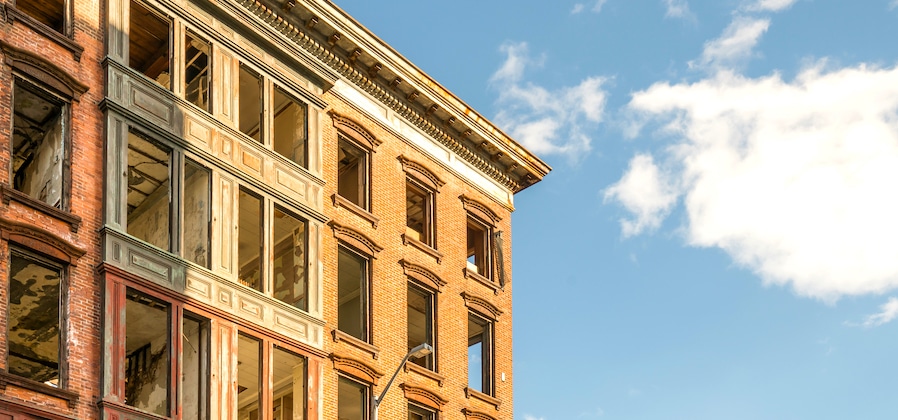
The term “blight removal” conjures up images of construction cranes knocking down homes, displacement, and gentrification. But blight can take many forms and its removal has many remedies. Preservation of seemingly dilapidated structures can invigorate and reinforce a community’s value and sense of place.
Historic preservation
Instead of knocking down older buildings with neighborhood character, nowadays many developers are working on revamping those spaces and giving them new life. Fully renovating a vacant or underutilized historic building can add to and preserve the fabric of a place while providing opportunity for new development.
Rehabilitation of dilapidated structures is equally as effective for commercial, residential, and mixed-uses, and is particularly well suited to historic areas that have fallen on rough times, such as New Orleans’ Seventh Ward, parts of East Oakland or many of Detroit’s neighborhoods outside of the urban core.
By focusing on forlorn properties, investors can increase their returns while also improving the general character and quality of the area. Additionally, rather than displacing existing tenants, seeking out and improving vacant property creates more housing than existed before, without significantly altering the character of the neighborhood. This strategy preserves community charm and while still increasing the housing available.
Commercial benefits
One lesson that should be ingrained in every developer’s mind is the failure of purely residential communities. In study after study, mixed-use neighborhoods consistently show benefits in resident economic activity, safety and crime, and lowered carbon footprint. Commercial activity allows residents to work and to live in the same area, reducing local congestion, and transportation costs like cars.
Affordable set-asides
Mixed-use development is a step toward creating complete communities; creating neighborhoods for a variety of income levels is even better. These strategies can go a long way towards creating quality, affordable neighborhoods. When addressing de-blighting initiatives, locals often worry about being displaced due to increasing property values and commensurate rents in the area. Setting aside a portion of units specifically for those who are lower on the income scale can help alleviate many of those concerns. Updating zoning constraints that allow for more mixed-use development is an essential component too.
_
The old paradigm of development is…old. Blight removal should be thought of in the context of building communities up with the assets already in place. Building functional, thriving communities simply requires it.
Image of building in Bridgeport, CT, courtesy of Small Change,
